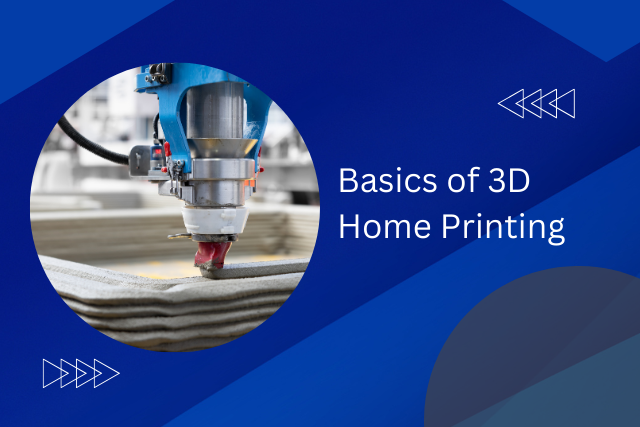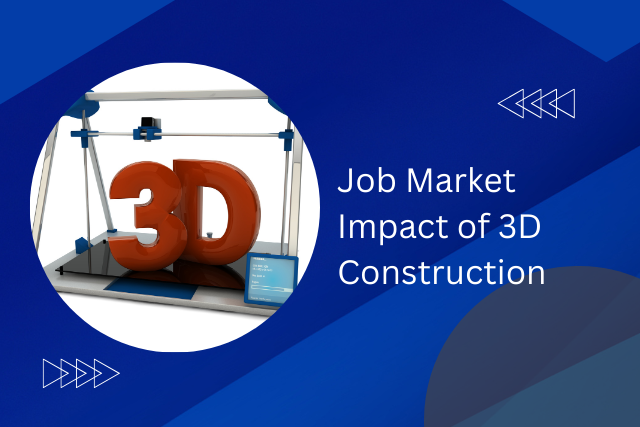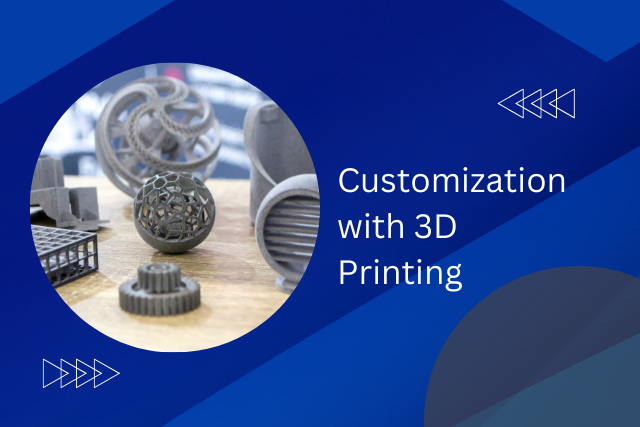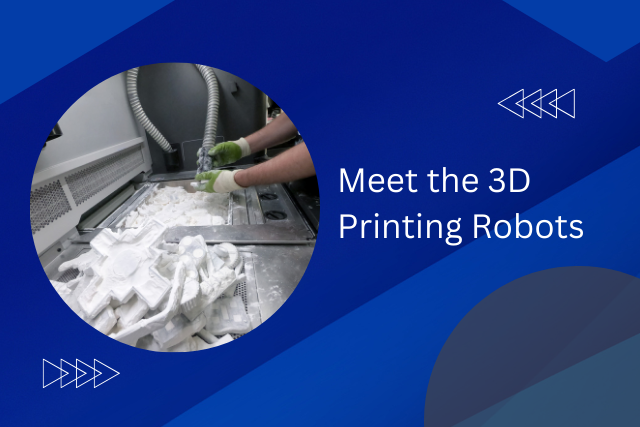The start of 3D printed cabins in eco-tourism marks a big step towards travel that’s better for the planet. These new places to stay are made with 3D printing technology and use sustainable materials. This means they don’t harm the environment as much as the usual way of building does. This mix of smart design and caring for the planet not only reduces harm to nature but also gives tourists special, green places to stay. As the travel world begins to change in this eco-friendly way, we might think about how this could change how we travel and help the environment.
The Rise of Eco-Tourism
In the past few years, more people have become aware of the need to take care of our environment. This has led to a big increase in eco-tourism. Eco-tourism is all about protecting nature and supporting local communities. It’s not just a passing trend but a big change in how we think about traveling. Eco-tourism focuses on making sure that travel doesn’t harm the environment. It helps keep nature beautiful and supports the people who live in these places, which is essential for keeping our planet healthy.
Technology has been very important in making eco-tourism better. It helps with planning trips that are good for the environment, managing resources wisely, and teaching visitors about nature. Thanks to technology, places that welcome eco-tourists can track how much they affect the environment, use clean energy, and make learning about nature fun and interesting. This means travelers become more careful and thoughtful about their impact.
Eco-tourism also means people can visit beautiful places without ruining them. It allows local communities to show off their culture and nature in their way. This helps build a world where everyone respects and understands each other, and wants to protect our planet. Eco-tourism is a way to travel that makes sure we can all enjoy the Earth without harming it.
What Are 3D Printed Cabins?
3D printed cabins represent a revolutionary approach in the realm of sustainable tourism, offering accommodations that are constructed using additive manufacturing techniques. This process not only streamlines the construction procedure but significantly reduces waste, aligning with eco-friendly practices. Such innovations promise enhanced sustainability and myriad benefits for both the environment and the tourism industry.
Definition and Functionality
Using new technology in making things, 3D printed cabins are a good way to have places to stay that don’t harm the environment. They use materials that can break down naturally or are made from used plastics. This makes these cabins very eco-friendly, as they don’t add much waste or carbon dioxide to the air compared to the usual way of building.
With 3D printing, these cabins can be made in special shapes and styles that look nice in nature, making the stay more enjoyable for people who visit. These cabins also have modern comforts, making them a great choice for travelers who care about the environment and prefer something different from regular hotels. This way, these cabins help in keeping tourism more sustainable.
Construction Process Overview
Building eco-friendly and nice-looking 3D printed cabins involves a special way of putting materials together. This method uses earth-friendly materials to make strong and unique places to stay. It works by putting material down, one layer at a time, exactly like the digital designs show. This lets builders make almost any design they can think of.
They often use materials that can break down naturally or have been recycled, which means less trash and less harm to the environment. Big robot arms and computer programs help make sure everything is put together just right. This way of building is faster than old methods and doesn’t need as many people working on it.
People who want something different from the usual will like this. 3D printed cabins are changing the way we think about building in a way that’s better for the planet.
Sustainability and Benefits
In the world of green travel, 3D printed cabins are a cool new way to stay that’s good for the planet. These cabins are made with care, using eco-friendly materials that don’t harm the environment. They don’t waste a lot of stuff or use too much energy to build.
The smart tech behind 3D printing lets people create cabins that fit right in with the natural surroundings. This means we can live close to nature without hurting it. These cabins are great because they keep the outdoors beautiful and help travelers feel more connected to nature.
3D printed cabins offer a new kind of place to stay that’s all about being kind to the earth while still being comfortable and looking good.
The Sustainable Materials Used
Transitioning to the cornerstone of sustainable construction within 3D printed cabins, the selection of materials stands paramount in achieving eco-innovation. Eco-friendly filaments, repurposed wood pulp, and biodegradable insulation options not only minimize environmental impact but also propel the industry towards a greener future. These materials underscore the commitment to sustainability, offering a blueprint for reducing carbon footprints in tourism infrastructure.
Eco-Friendly Filaments
To make 3D printed cabins less harmful to the environment, companies are using eco-friendly filaments. These are made from things that can grow again (like plants) or from recycled stuff. This way, they help keep nature clean and healthy. PLA (Polylactic Acid), which comes from corn starch or sugarcane, is a popular choice because it can break down naturally.
By also using recycled plastics, these filaments turn trash into useful materials for building, which is much better for the air we breathe compared to old-style building materials. This move towards eco-friendly materials shows a big step in caring more about our planet. It allows us to build special places to stay that are new, exciting, and good for the earth.
Repurposed Wood Pulp
Using eco-friendly stuff, we’re turning used wood pulp into something really useful for making 3D printed cabins. This smart way of building doesn’t just keep waste out of dumps but also means we don’t need to cut down as many trees.
We take the old wood pulp and make it into a strong, useful thread for 3D printing. This helps us reuse stuff instead of throwing it away, making great places to stay that don’t hurt the planet. These cabins are perfect for people who want something different but still care about the Earth. By using repurposed materials, we help keep the environment cleaner and offer a special experience for travelers.
Biodegradable Insulation Options
Exploring the world of biodegradable insulation, new materials like sheep’s wool and recycled denim are being used to make 3D printed cabins more sustainable. These materials are good for the environment and keep the cabins warm very well. sheep’s wool comes from sheep and can be used again and again.
It helps control moisture and keeps the heat in. recycled denim, made from old jeans, is a safe choice that doesn’t harm the environment. It keeps waste out of landfills and cuts down on pollution from making new materials. By using these biodegradable options, 3D printed cabins not only stay warm but also show a strong commitment to protecting the environment. This makes them attractive to tourists who care a lot about nature and want to stay in places that respect the earth.
Minimizing Environmental Impact
Using 3D-printed cabins helps make building places for tourists better for the environment compared to old ways of building. This new method uses special materials and designs that are good for the planet, creating less waste and using fewer resources that can run out. 3D printing makes sure materials are used in the best way possible, cutting down on waste and inefficiency seen in traditional building methods.
Also, 3D printing makes it easier to include the natural surroundings and ecosystems in the design of cabins without having to change the land a lot or cut down forests. This mix of technology and nature keeps the environment safe, making sure that tourist places help rather than harm nature. By focusing on renewable materials and buildings that don’t use a lot of energy, 3D-printed cabins stand as examples of how to be eco-friendly, showing a new way for tourism to be more responsible.
This approach not only reduces the harm to nature from growing tourist spots but also meets the increasing desire for travel experiences that are unique and mindful of the environment. By using 3D printing technology, the tourism industry can offer people the chance to travel in a way that doesn’t hurt our planet.
The Design and Construction Process
The design and construction process of 3D printed cabins emphasizes the use of innovative materials, optimized assembly and building techniques, and a strong commitment to reducing environmental impact.
By integrating eco-friendly materials that are both durable and sustainable, these cabins represent a significant advancement in the field of sustainable tourism infrastructure. The construction methodology not only streamlines the building process but also minimizes waste, ensuring a lower ecological footprint.
Innovative Materials Used
In the world of green travel, people are making cabins with 3D printers using special, earth-friendly materials. This is a smart and kind way to take care of the planet.
| Material Type | Source | Environmental Benefit |
|---|---|---|
| Recycled Plastic | Trash that’s been used before | Makes less trash, uses less energy |
| Biodegradable Polymers | Plants | Can break down naturally, keeps pollution low |
| Mycelium Composite | Mushrooms | Can grow back, good for nature |
| Hempcrete | Hemp plants | Takes in more CO2 than it gives out, saves energy in keeping homes warm or cool |
These materials are new and different from old building ways. They let people live in places without hurting the earth. Using these materials helps reuse and recycle things, which is good for living together with nature in a healthy way. This smart idea helps make sure future people can see and enjoy nature without the bad parts of old building ways.
Assembly and Building Techniques
Thanks to better 3D printing technology, building eco-friendly cabins has become a smart and green way to build. These methods use smart computer programs to make sure there is little waste and the best use of materials, helping to keep nature safe. The cabins are designed in pieces that can be easily put together or taken apart, perfect for people who love to travel without harming the environment.
Biodegradable materials are also used, showing a strong commitment to protecting the earth. This way of building 3D printed cabins is not just about making buildings, but it’s a way to show that technology and caring for the environment can work together, making a future where traveling and looking after the earth can happen at the same time.
Environmental Impact Reduction
3D printed cabins help reduce harm to the environment from start to finish. They use smart computer programs and eco-friendly materials to be green all the way through. These cabins are made very carefully to use only the materials needed, without extra waste. They often use materials that can break down naturally or have been recycled, showing a strong care for nature.
This way of building saves resources and cuts down on carbon emissions, making it a good choice for people who care about the planet and want to stay in places that do too. By combining green technology and smart design, these cabins show a way forward for sustainable tourism. They help us visit beautiful places without harming them, ensuring they stay beautiful for others in the future.
Location and Accessibility
These 3D printed cabins are placed carefully to avoid harming the environment. They fit well into different natural areas, making it easy for tourists to visit without damaging the land. The goal is to pick spots that are beautiful but not crowded, to help spread out visitors and protect popular nature spots. The choice of each location is based on a detailed look at how to get there, how well it blends with nature, and if it can provide a great outdoor experience without needing big buildings or roads.
To get to these cabins, paths made of recycled materials or gentle trails are used, so the nature around them stays healthy. This plan shows a strong desire to offer a peaceful place for people who love nature, while also taking care of these places for those who come after us. By carefully thinking about where to put these cabins and how people can reach them, this project aims to support travel that is good for the environment and meets the wishes of tourists who care about nature.
Comfort Meets Eco-Friendly
These 3D printed cabins mix comfort with caring for the environment. They use special materials from sources that don’t harm the earth, making less waste and using less energy. This fits with the idea of a circular economy, where everything is used wisely without waste. The cabins are made to fit nicely with nature, causing little harm to the landscape and helping the building and environment get along well.
The cabins have modern heating and cooling systems that use solar power and other clean energy. They also have smart features like intelligent insulation that adjusts to the weather, and water-saving fixtures that cut down on water use but still keep things comfortable. The inside of the cabins uses natural light and recycled materials that are safe and don’t cause allergies, making a good space for people who care about the planet.
For those who like being free and caring for the earth, these cabins are a big step forward. They let people enjoy the beauty of nature while making sure they don’t harm it too much. This shows that it’s possible to have comfort and care for the environment at the same time.
Case Studies: Success Stories
We look at some special projects to see how 3D printed cabins are changing the way we think about eco-friendly places to stay. One big success is the EcoResort in the Netherlands. Here, 3D printed cabins are made with local, natural materials. This method cuts down on pollution from transport and makes sure the cabins can be recycled when they’re no longer needed.
Another great example is the Autonomous Cabin in the United States, built to work on its own without needing to connect to outside utilities. These cabins get power from the sun and collect rainwater, letting visitors enjoy nature without harming it. Using 3D printing has also cut down on waste from building, making it a smarter way to build.
In Scandinavia, the Aurora Wilderness Lodge uses 3D printing to make cabins that are good for cold weather but still gentle on the environment. These cabins keep you warm and use less material, making them a great choice for people who want to explore the wild in a responsible way. These stories show us how 3D printed cabins can change eco-friendly travel, offering good options for travelers who care about the planet.
Challenges and Solutions
The creation of 3D printed cabins is a big step towards better tourism that cares for the environment. However, this new way of making cabins comes with its own problems that need smart answers. One big issue is making sure these 3D printed cabins can stand up to different weather conditions without harming the planet. To solve this, experts are making new materials from things that have been used before or come from nature, which helps keep the Earth clean.
Another problem is putting these cabins in nature without hurting the plants and animals that live there. This means planning very carefully and using 3D printing to build in a way that doesn’t use up too much space. One idea is to build cabins that are raised off the ground so the natural area below them stays safe.
Also, making big things with 3D printing uses a lot of energy. To fix this, people are looking into using energy from the sun or wind right where they are building, which makes the whole process more eco-friendly.
For people who love to travel but also care about nature, these solutions mean they can look forward to trips that don’t harm the Earth. This way, traveling and taking care of the planet can go hand in hand.
Future of Green Travel
The creation of 3D printed cabins marks a big change in making travel more eco-friendly. It shows a new way for places to stay that are much better for the environment, cutting down on waste and using less natural resources. These cabins are made using materials that are good for the planet and have special features that save energy, making them a great example for others in the travel world to follow.
Looking ahead, the growth of 3D printing technology means that travelers can have unique stays that don’t harm the environment. This matches well with what today’s travelers want – the freedom to explore without damaging nature. It encourages people to live in a way that’s good for the earth, fitting the idea of eco-tourism.
Also, by using 3D printed cabins, we can visit new and untouched places without hurting them. This is a big step towards being able to enjoy the earth’s beauty while making sure it stays safe and healthy for others in the future. This makes green travel a key part of tourism that’s both responsible and enjoyable.
Conclusion
In summary, making cabins with 3D printing is a big step forward for sustainable tourism. These cabins are made with eco-friendly materials and use a method that doesn’t harm the environment much. This is great for people who want to travel in a way that’s good for the Earth.
These cabins are both comfortable and green, showing that technology can help make tourism better for the planet. By solving problems, we can create examples that others can follow to make travel more sustainable.






